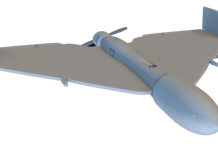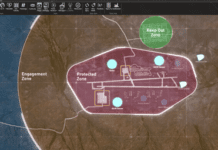This post is also available in:
 עברית (Hebrew)
עברית (Hebrew)
3D printers have been used to create a wide range of things, from robots to prosthetic arms. Now the U.S. Marines have used the technology to make the first 3D-printed reinforced-concrete footbridge.
The Army Corps of Engineers’ Construction Engineering Research Laboratory (CERL) has recently tested the 3-foot-wide foot bridge which was designed to withstand a 15,000 pounds. It succeeded in carrying the equivalent of nearly 45,000 pounds.
A 3D-printed bridge could be used both in military or humanitarian settings, says First Lt. Joshua Raphaelson. “A footbridge, we can get troops across, but in a humanitarian disaster that takes out bridges, you can build a bridge to get people across, or we can build shelters out of 3D printing for people to stay in, or we can build bunkers for us to stay in. It makes it faster, cheaper, quicker and more standardized.”
The Army lab has been 3D-printing with concrete since 2015, starting with a simple fighting position and a guard shack. In 2017, it 3D-printed a barracks with straight walls, and last year, it printed another barracks with angled walls that is twice as strong with only 10 to 15 percent more concrete, according to news-gazette.com.
Just like printing 3d plastic products, the 3d printer prints layers of concrete, but in large scale. Using concrete, which is heavier and doesn’t solidify as quickly as plastic, does limit them on the shapes they can build.
Megan Kreiger, the printing lead on the project, explains: “So with regular 3D printing, you can get all kinds of crazy 3D geometries,” Kreiger said. “With concrete, you can still get a little bit of variation in geometry, but it’s still wet concrete as you print, so there’s more limitations in what you can do.”
Each layer is about an inch thick and cures after a few minutes. “It really is quite fast, and the concrete itself, after about 24 hours, is relatively strong,” Kreiger said. “We have the ability here to basically continuously print a structure from the bottom to the top.”
The bridge — which consisted of three sections totaling 33 feet in length — was built by seven or eight Marines in about six days.


























